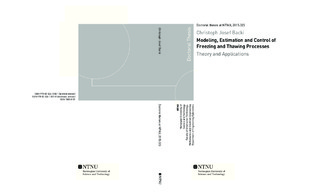| dc.description.abstract | Fisheries and aquaculture are very important sectors in the Norwegian industry. Fish and
its by-products are considered wholesome foodstuff and are popular especially due to
their nutritional value. Therefore, consumer safety is a very important topic and methods
for prolonging shelf-life play a vital role in the fishing and aquaculture industries. These
methods are mostly based on cooling and freezing techniques, as bacteriological and enzymatic
activities are generally reduced at low temperatures. However, freezing and cooling
are quite energy- and time-consuming. Freezers are often designed as batch-operations,
especially on board fishing vessels, and thus act as bottlenecks in the production chain.
Therefore, an optimal operation should be imposed in order to minimize the time the good
is spending in the freezer. If a good is in the freezer longer than necessary, this operation
can be denoted as overfreezing. Hence, the aim is to monitor and operate the freezing processes
in an optimal way with respect to quality, but also with regards to energy use and
environmental impact. This can be achieved by a better understanding of the factors that
influence the quality of fish and seafood during freezing and thawing. Furthermore, comprehension
of the actual processes that happen during phase change are of importance;
this includes the derivation of a mathematical model to describe the temperature evolution
in the food. This model can also be used to monitor and operate the reversed freezing
process, namely thawing. Considering not only freezing but also the thawing process as
an additional and often inevitable production step makes sense due to the fact that it is
difficult to process frozen fish.
The thesis is structured into five parts, which are divided thematically: Introduction and
Preliminaries, Mathematical Modeling, Freezing and Thawing Applications, Experiments
and Closing Remarks.
Part I gives an introduction to the context of this thesis. The importance of the fishing
industry for the Norwegian economy is highlighted. Furthermore, preliminaries about
topics related to freezing and thawing of foodstuff in general, and fish and fish products in
particular, are presented. These preliminaries include methods of industrial applicable and
more theoretical nature. Furthermore, a Chapter is dedicated to the concise introduction
to quality aspects of fish, in a general way, but also with respect to freezing and thawing
applications and processes.
In Part II, a mathematical model for freezing and thawing processes is derived from the
diffusion equation, a partial differential equation (PDE). This model represents a form of
a linear heat equation, which is extended by a nonlinear term. This nonlinear term enters
the equation due to the fact that phase change occurs in both freezing and thawing, and therefore the parameters of the diffusion equation are modeled state- and thus temperaturedependent.
Similarities between this model and other types of PDEs, in particular the
Burgers’ equation and its potential form, are investigated. However, due to the statedependency
of the coefficients, known transformations can not be applied in order to use
already established stability results for this kind of heat equation. Therefore, the stability
of the model is investigated. This is conducted in order to show that the model can be used
for describing freezing and thawing applications, which are in fact known to be stable due
to the laws of thermodynamics.
Part III presents applications of the model derived in Part II for freezing and thawing processes,
respectively. Firstly, an observer based on an Extended Kalman Filter (EKF) is
developed for both, freezing in plate freezers and thawing in contact thawing devices. The
aim is to estimate the temperatures in the inner domain of a block of foodstuff. Therefore,
some assumptions have to be imposed, e.g. that temperatures on the surface of the block
are measurable. Secondly, the models are subject to Optimal Control Problems (OCP),
where an optimal input function, meaning the temperature at the boundaries, is calculated
in order to either optimally freeze or thaw blocks of foodstuff. This is done for
open loop Optimal Control (OOC), which holds for perfect knowledge of the process with
no measurement and estimation disturbances. Furthermore, closed loop Model Predictive
Control (MPC) is applied, where measurement / estimation errors as well as discrepancies
between the model and the real process are taken into account.
In Part IV experimental results for a freezing process in a horizontal plate freezer and a
thawing process in a rebuilt horizontal plate freezer adapted for thawing purposes (plate
thawer) are shown. Both of these experiments have been conducted at Matís Food Research
in Reykjavík, Iceland. The freezing experiments were conducted with a rectangular tray
made of aluminum, which was placed in between the plate freezer walls and filled with tap
water. Temperature loggers were placed in several positions inside the tray to log the temperature
during phase change from liquid to solid. Ammonia was used as the refrigerant in
the plate freezer. For the thawing process the same tray was used. Blocks of frozen headed
and gutted (H/G) cod were placed inside the tray and between the walls of the re-built plate
freezer. The medium to thaw the fish blocks was tap water. Temperature loggers were attached
to the fish blocks, namely in the center, half-way to the center and just below the
surface.
In Part V the thesis is closed with the conclusion and an outlook on future work. | nb_NO |
